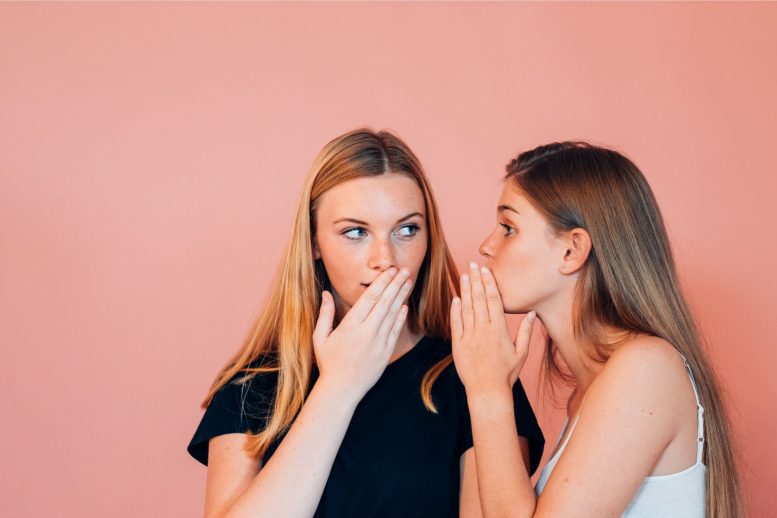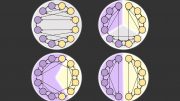
Researchers have created a model to study the impact of gossip on cooperation. They found a mathematical relationship between different forms of gossip, showing how understanding single-source gossip helps understand peer gossip. Their model reveals that sufficient gossip can foster cooperation by improving consensus on reputations. They also noted that biased gossip can affect cooperation positively or negatively. Future research will explore how gossip dynamics interact with altruism and in-group/out-group biases.
Researchers Mari Kawakatsu, Taylor A. Kessinger, and Joshua B. Plotkin from the Department of Biology created a model that uses two types of gossip to explore indirect reciprocity.
A new study has found that gossip can enhance cooperation by improving consensus on reputations, though biased gossip has varying effects. Their model provides insights into how different gossip sources impact cooperative behavior. Future research will delve into gossip’s interaction with altruism and group biases.
Gossip often has a negative connotation, but imagine you are part of a group deciding on a job candidate to hire or local political candidate to back. Candidates who get a good reputation by helping others may be more likely to receive help in the form of a job offer or endorsement, a feedback loop known as indirect reciprocity. Gossip can facilitate cooperation.
Previous research has shown that people tend to cooperate more when they think their peers are gossiping about their behavior, gossip allows people to avoid potential cheaters, and gossip can punish freeloaders. Yet little was understood about how much gossip is required to foster cooperation and how incorrect information impacts the effects of gossip.
Mathematical Modeling of Gossip Dynamics
Researchers in the Plotkin Research Group in Mathematical Biology in the School of Arts & Sciences at the University of Pennsylvania studied this issue by creating a model that incorporates two sources of gossip: randomly selected people versus a single source. They showed that there is a mathematical relationship between these forms of gossip—meaning that understanding gossip with a single source also allows them to understand gossip with peers—and developed an analytical expression for the amount of gossip required to reach sufficient consensus and sustain cooperation. Their findings are published in Proceedings of the National Academy of Sciences.
“The study of the spread of social information and the study of the evolution of cooperative behavior are very mature fields, but there hasn’t been as much work done to combine those,” says first author Mari Kawakatsu, a postdoctoral researcher in the lab of biology professor Joshua B. Plotkin, the paper’s senior author. “By merging ideas from the two fields, we were able to develop a mechanistic model of how information spread can help cooperative behavior.”
The Role of Indirect Reciprocity and Gossip
Co-author Taylor A. Kessinger, also a postdoctoral researcher with a background in physics, says this analysis bridges the critical gap in past work on no gossip, where everyone’s opinion is private and independent, and infinitely fast gossip with total agreement about reputations. Kessinger has also seen the central role that indirect reciprocity plays on X, formerly known as Twitter, and how disagreement about reputations and ingroup-outgroup dynamics can incentivize bad behavior.
“Systems of morality and reputation help ensure that good actors get rewarded and bad actors get punished. That way, good behavior spreads and bad behavior doesn’t,” Kessinger says. “If you punish a bad actor, you need to be sure that other people agree they’re guilty of wrongdoing. Otherwise, they might see you as the bad actor. Gossip can be one way to accomplish this.”
Plotkin says while past work has taken the basic model of indirect reciprocity and added various complications, such as stereotyping, this paper goes back and fills a gap in the theory. The paper provides a quantitative model that explains how many rounds of gossip are sufficient for people to change their cooperative or noncooperative behaviors, he says.
The paper involves a game-theoretical model where an interaction takes the form of a donation game, with each “donor” choosing whether to cooperate with each “recipient” by paying a cost to provide a benefit. All individuals serve once each as donor and recipient. Each then privately assesses the reputation of every donor by assessing their action toward a randomly selected participant, and a period of gossip about reputations follows. Private assessments and gossip continue until reputations equilibrate.
The authors note that behavioral strategies vary. Some always cooperate, some always defect, and some discriminate, meaning they cooperate when the recipient has a good reputation and defect when the recipient has a bad one. The researchers found that both forms of gossip tend to increase agreement about reputations, which in turn improves the equilibrium reputations of discriminators. So, if gossip runs long enough, discriminators can eventually outcompete cooperators and defectors, which is a good outcome because discriminators are highly cooperative with one another and stable against non-cooperative behaviors.
The researchers further found that biased gossip, meaning the spread of false information, can either facilitate or hinder cooperation, depending on the magnitude of gossip and whether the bias is positive or negative. But as gossip becomes more prone to unbiased “noise,” the population must gossip for longer to stabilize the equilibrium.
Kawakatsu next wants to think about how information flow interacts with altruism. The paper also notes that future research could explore how the number of gossip sources impacts cooperation, the conditions that would cause a rift in how an individual is viewed, and how bias may be applied differently for in-group and out-group members.
Reference: “A mechanistic model of gossip, reputations, and cooperation” by Mari Kawakatsu, Taylor A. Kessinger and Joshua B. Plotkin, 8 May 2024, Proceedings of the National Academy of Sciences.
DOI: 10.1073/pnas.2400689121
The study was funded by the James S. McDonnell Foundation and the John Templeton Foundation.









“…..gossipers and meddlers in other people’s affairs.”
You can’t use an evil tool to do good.